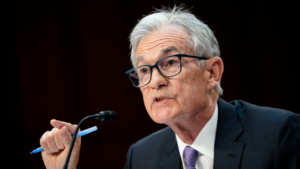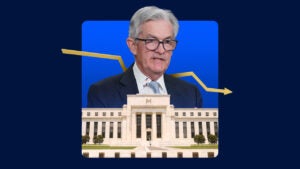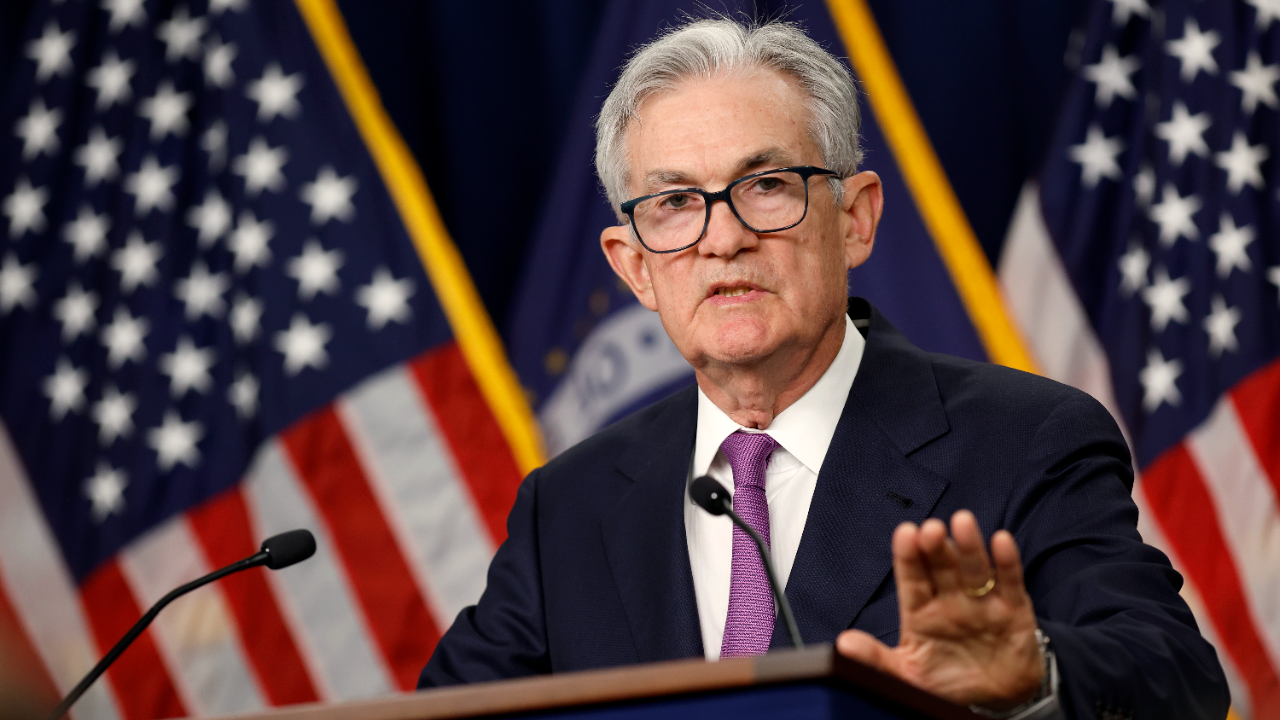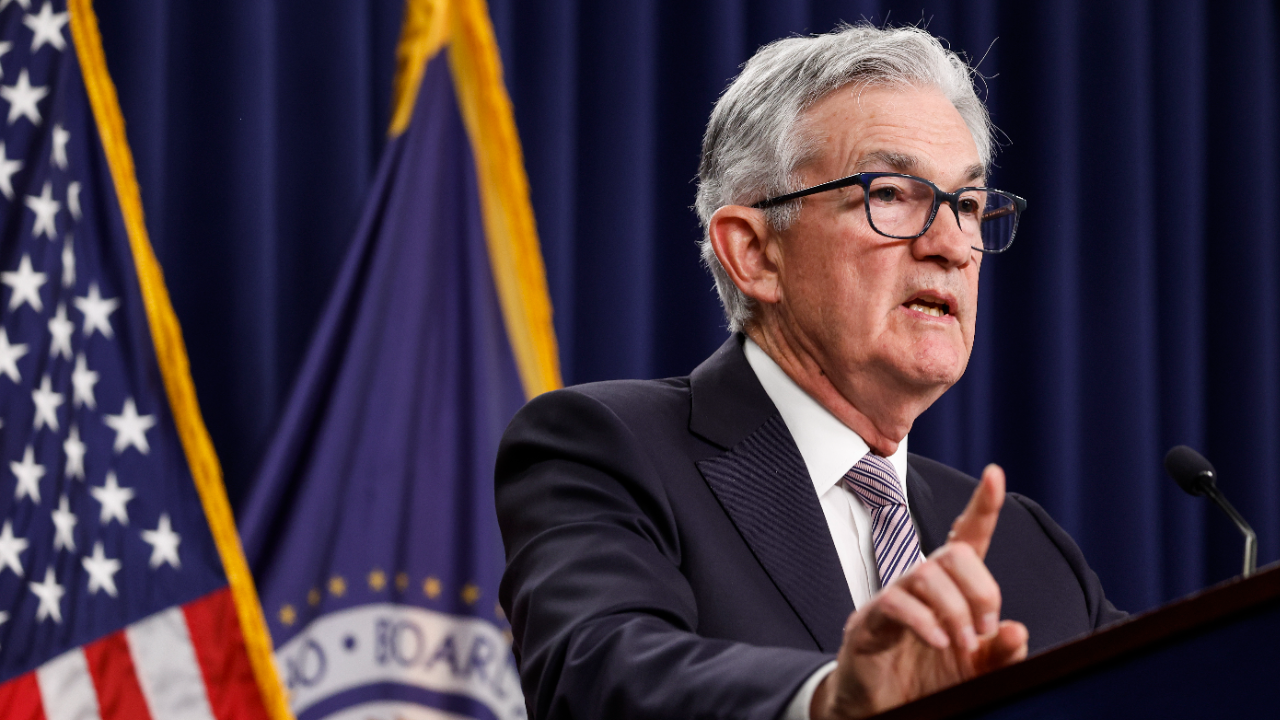Federal Reserve raises interest rates by a half point to fight soaring inflation
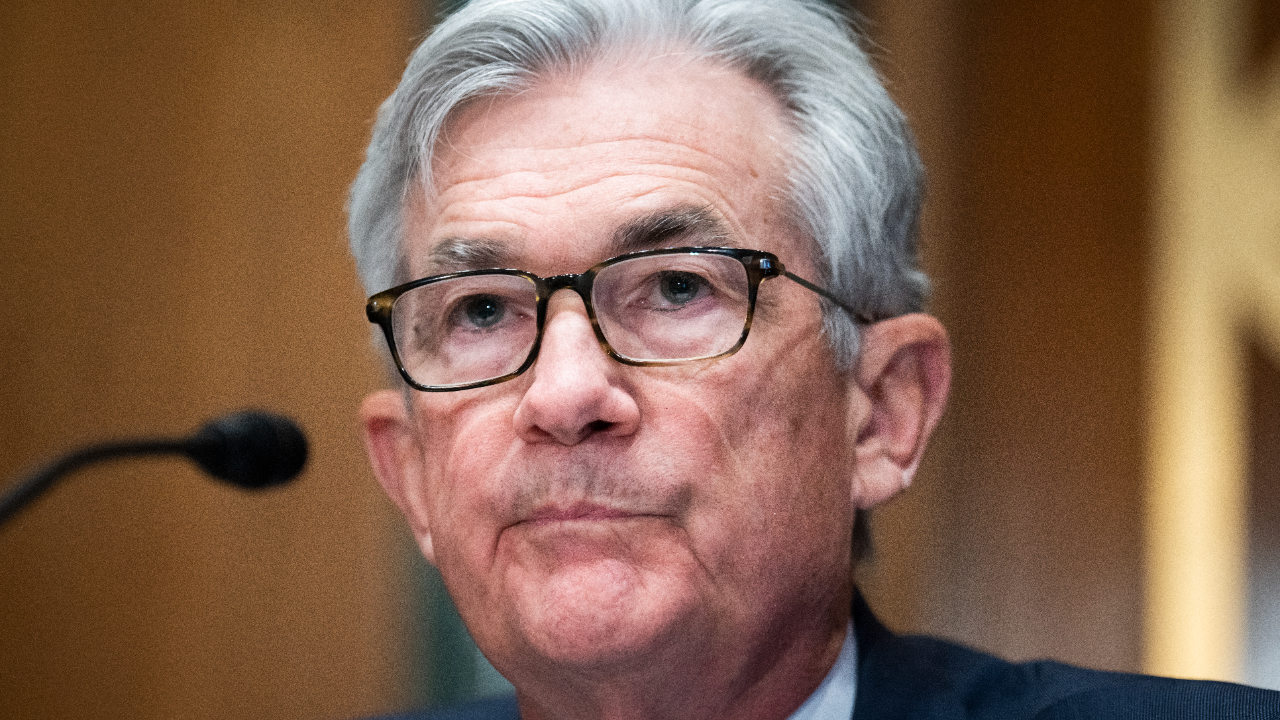
The Federal Reserve raised interest rates by half a percentage point on Wednesday — the biggest increase to short-term borrowing costs in more than two decades — and alerted consumers that more hikes of this size are yet to come, marking the U.S. central bank’s most aggressive moves yet to contain the highest inflation in 40 years.
The Federal Open Market Committee (FOMC) set 0.75-1 percent as the new target range for the federal funds rate, a key benchmark borrowing rate that acts as a guidepost for various consumer debt ranging from auto loans to credit card rates, as well as yields on certificates of deposit (CDs) and savings accounts.
“Inflation is much too high, and we understand the hardship that it is causing,” said Fed Chair Jerome Powell in a post-meeting press conference. “There is a broad sense on the committee that additional 50 basis point increases should be on the table at the next couple of meetings.”
Officials also announced plans to start trimming the massive near $9 trillion bond portfolio that ballooned during the coronavirus crisis. On June 1, they’ll take three months to work their way up to letting $60 billion worth of Treasurys and $35 billion in mortgage-backed securities roll off their balance sheet at maturity each month.
“The committee is highly attentive to inflation risks,” officials said in their post-meeting statement. “The invasion and related events are creating additional upward pressure on inflation and are likely to weigh on economic activity. In addition, COVID-related lockdowns in China are likely to exacerbate supply chain disruptions.”
While rates are making leaps back toward pre-pandemic levels, the Fed’s benchmark rate is still lower than it had been at any point in the years leading up to the outbreak — though all it would take is two 50-basis point hikes to get the Fed’s benchmark back to a range not seen since before the crisis.
Other borrowing rates, however, have risen much more sharply. The average 30-year fixed-rate mortgage, for example, has skyrocketed by 2 percentage points since December 2021, eclipsing 5 percent at the end of April for the first time since 2018.
- Fed raises rates to target range of 0.75-1 percent.
- The Fed announced plans to shrink its near $9 trillion balance sheet by up to $95 billion a month.
- Policymakers say they are planning for “ongoing” rate hikes.
What it means for: Mortgage rates | Savers | Borrowers | Investors
Those shifts mark a new normal for consumers: Fed officials see more expensive borrowing costs and less accommodative financial conditions as the only way to cure rampant inflation. That’s because higher interest rates tend to weigh on the balance sheets of both businesses and consumers, slowing demand. The Fed’s aggressive pivot is one of the fastest withdrawals of stimulus in decades, and even more rate hikes are on the table for the months ahead.
“This is likely not the last time we see a larger rate hike, as the Fed is playing catch-up to rein in inflation,” says Greg McBride, CFA, Bankrate chief financial analyst. “The combination of interest rate hikes and the June 1 start to shrinking the asset portfolio will complete the Fed’s transition from going full throttle to putting the brakes on the economy.”
The Fed’s rate hike: What it means for you
Mortgages and refinance rates
The Fed’s aggressively hawkish stance has impacted few corners of the economy more than the housing market.
Mortgage rates have surged along with the 10-year Treasury yield, and the sub-3 percent mortgage rates that prevailed throughout the coronavirus crisis are almost unthinkable today. The shifting tides have only added on to the challenges facing would-be homebuyers right now, from sky-high home prices to limited inventory.
Those who have already financed their home are unlikely to feel any impact. That’s because most mortgages come with fixed rates, meaning those interest rates don’t adjust through the entire life of the loan. But borrowers might have missed an opportunity: Those who didn’t refinance in 2020 and 2021 are unlikely to find a deal as attractive today as they would’ve back then.
That doesn’t mean better deals are nowhere to be found. Refinance activity is rate-sensitive, meaning some lenders might offer lower rates than others to compete.
The mortgage rate outlook is just as tricky as the economy itself. On the one hand, higher inflation and more rate hikes could push mortgage rates even higher. Yet, if investors start to fear that a slowdown could be on the horizon, the cost of financing a home could also retreat. Shopping around for the best deal is all the more imperative today as potential homebuyers navigate through a rising-rate environment.
Borrowers
Consumers with variable-rate debts and balances on a high-interest credit card are the most fragile in a rising-rate environment. Credit card rates rise in tandem with every Fed rate hike, and consumers with low credit scores might see their annual percentage rates (APRs) climb at a faster pace than others. Issuers typically charge borrowers a margin on top of the prime rate, which also typically holds 3 percentage points above the fed funds rate.
Calculate whether a balance-transfer card is the right option for you to consolidate your debt. Concentrate on keeping a strong credit score and consider refinancing variable-rate loans into fixed.
Savers
Savers are still waiting for their moment in today’s rising-rate environment.
While borrowing costs have surged, yields are still next-to-nothing, with the average savings account rate currently hovering at 0.06 percent, according to Bankrate data. But consumers can likely find better bang for their buck if they stash their cash in a high-yield savings account, which offers rates as much as 10 times the national average.
Today’s high inflation environment only underscores the importance of looking for the best place to park your money. Consumers also shouldn’t let today’s 40-year-high inflation interfere with their savings’ plans. Even in high inflationary environments, emergencies can happen. Meanwhile, having a substantial amount of funds that you can turn to in the event of an unplanned expense can keep you away from credit card debt with double-digit interest rates.
“Households should pay down debt — especially costly credit card and other variable rate debt — and boost emergency savings,” McBride says. “Less debt and more savings will enable you to better weather rising interest rates, and is especially valuable if the economy sours.”
Investors
The days of easy money are over — and when the Fed takes the punchbowl away, it very often leads to market volatility.
Stocks have already been on a rollercoaster this year, but if you’re invested for the long-haul, be sure to tune out any day-to-day bumpiness.
The Fed’s ultimate goal bodes well for your investments: Stomping out high inflation to pave the way for a long and stable expansion.
But economic risks remain, and they could only get more complicated as rates climb higher. The Fed is betting that it can “soft land” the economy by gradually slowing growth enough that it rebalances inflation to more normal levels. The Fed has done that before, with experts pointing to a period in 1994, but officials are at a much different starting line with inflation already at its highest since December 1981.
The ultimate risk is that officials might overdo their tightening, causing an economic slowdown — or a recession.
A slowdown doesn’t have to be as severe as the coronavirus crisis, but consumers should still come up with a recession playbook, including ways they can can boost their employability and how they’d respond to a stretch of joblessness.
The Fed might not be done with half-point rate hikes
While the Fed’s half-point rate hike is a monumental decision, investors also think the Fed is only getting started.
Market participants see an extra 2.25 percentage points of tightening this year, bringing the federal funds rate to a target range of 3-3.25 percent by December 2022, according to CME Group’s FedWatch. If that comes to fruition, rates would be at levels not seen since 2008.
To get to that level, the Fed will have to hike in four 50-basis-point increments, given that officials only have six more meetings left this year. Counting March’s hike, that path would mean officials will have raised interest rates seven times in 2022 alone, the most active Fed since 2005.
But by sheer magnitude, officials haven’t adjusted interest rates by that much in one single year since the 1980s, the last time inflation became a major problem for the financial system. Coupled with the Fed’s impending balance sheet drawdown this year, the Fed might even be on the verge of unleashing one of the most hawkish years that many consumers have ever witnessed.
(Take a look at the Fed’s interest rate history from the 1980s to the present.)
“The stance that they’re taking now to combat inflation is as hawkish as we’ve seen in some time,” says Andrew Patterson, CFA, senior international economist at Vanguard. “Given where conditions are today, they’re a bit behind the curve.”
Inflation
How aggressive the Fed gets with rate hikes depends on what happens with inflation. Consumer prices in March rose 8.6 percent from a year ago, a fresh 40-year high, according to the Department of Labor. A separate gauge that U.S. central bankers more closely follow — the personal consumptions expenditures index (PCE) — topped 6.6 percent in the month. Both trackers have spent more than a year holding above the Fed’s typical 2 percent inflation target.
On the one hand, price pressures could cool, as supply chain bottlenecks ease on durable goods, such as cars, appliances and couches. But other corners of the economy that could prove to make inflation more permanent are rising, such as rents. Given that tenants are locked into a lease for around 12 months, workers could start to demand higher pay as a result — and by some measures, that’s already happening. Over the past 12 months, wages and salaries among private-sector workers are up 5 percent, the biggest increase on record, according to data from the Department of Labor.
Front-loading rate hikes
The Fed may judge that it’s important to be aggressive now, out of the gate, to hopefully help prevent central bankers from doing too much. Monetary policy lags, and tightening rates over a longer stretch of time could raise the risk that they could adjust borrowing costs into an economic slowdown.
Powell has called this tactic “front-loading,” an idea that he purported in an April public appearance leading up to the Fed’s May announcement.
The ultimate question, however, is how much front-loading will be necessary. Investors are already betting that the Fed will have to get even more aggressive for June, with virtually 100 percent of investors betting on a 75-basis-point hike. If the Fed moves by that magnitude, it would be the first time since 1994.
Powell, however, seemingly ruled out that aggressive increase, adding that it’s “not something the committee is actively considering.”
“If the Fed wants to achieve their goal of bringing inflation back down toward target, they may have to deal with bouts of financial volatility, which they’re willing to do, and maybe there unfortunately is a bit of an uptick in the unemployment rate,” Patterson says. Given the Fed’s dual mandate of stable prices and maximum employment, “They’re going to focus more on the former in the near term, even if it does mean a little bit of pain for borrowers — both households and businesses.”
Powell noted the tradeoffs that come along with making it more expensive to borrow money, but cautioned that the financial pain that comes along with high inflation is often even greater, particularly for low-income households and individuals living on fixed income.
“It’s not going to be pleasant either,” Powell said, referring to higher interest rates. “But in the end, everyone is better off with stable prices.”



